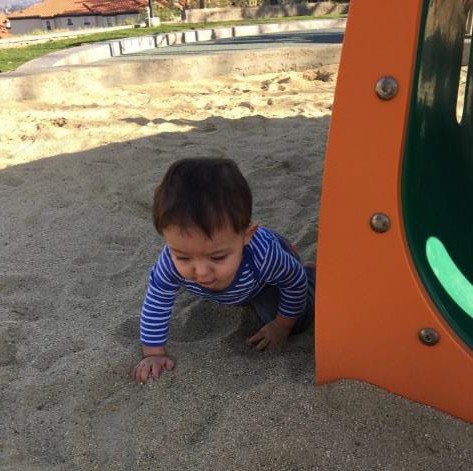22 Gross Motor Skills
Voluntary movements involve the use of large muscle groups and are typically large movements of the arms, legs, head, and torso. They are referred to as gross motor skills (or large motor skills). These skills begin to develop first. Examples include moving to bring the chin up when lying on the stomach, moving the chest up, rocking back and forth on hands and knees, and then crawling. But it also includes exploring an object with one’s feet as many babies do as early as 8 weeks of age if seated in a carrier or other device that frees the hips.
This may be easier than reaching for an object with the hands, which requires much more practice (Berk, 2007). And sometimes an infant will try to move toward an object while crawling and surprisingly move backward because of the greater amount of strength in the arms than in the legs! This also tends to lead infants to pulling up on furniture, usually with the goal of reaching a desired object. Usually this will also lead to taking steps and eventually walking.[1]
Physical Gross Motor Milestones
As stated above, children grow very quickly and meet physical milestones rapidly in the first few years of life. The following is a table of the major milestones (behaviors or physical skills seen in infants and children as they grow and develop that typically occur within normal range) that occur in children during those first formative years.[2]
|
Typical Age |
What Most Children Do by This Age |
|
2 months |
|
|
4 months |
|
|
6 months |
|
|
9 months |
|
|
1 year |
|
|
18 months |
|
|
2 years |
|

In this video, Dr. Boise defines gross and fine motor skills and reviews two rules for the development of motor skills.
- Children’s Development by Ana R. Leon is licensed under CC BY 4.0 ↵
- Developmental milestones record by the U.S. National Library of Medicine is in the public domain ↵
- Developmental Milestones by the CDC is in the public domain. ↵

